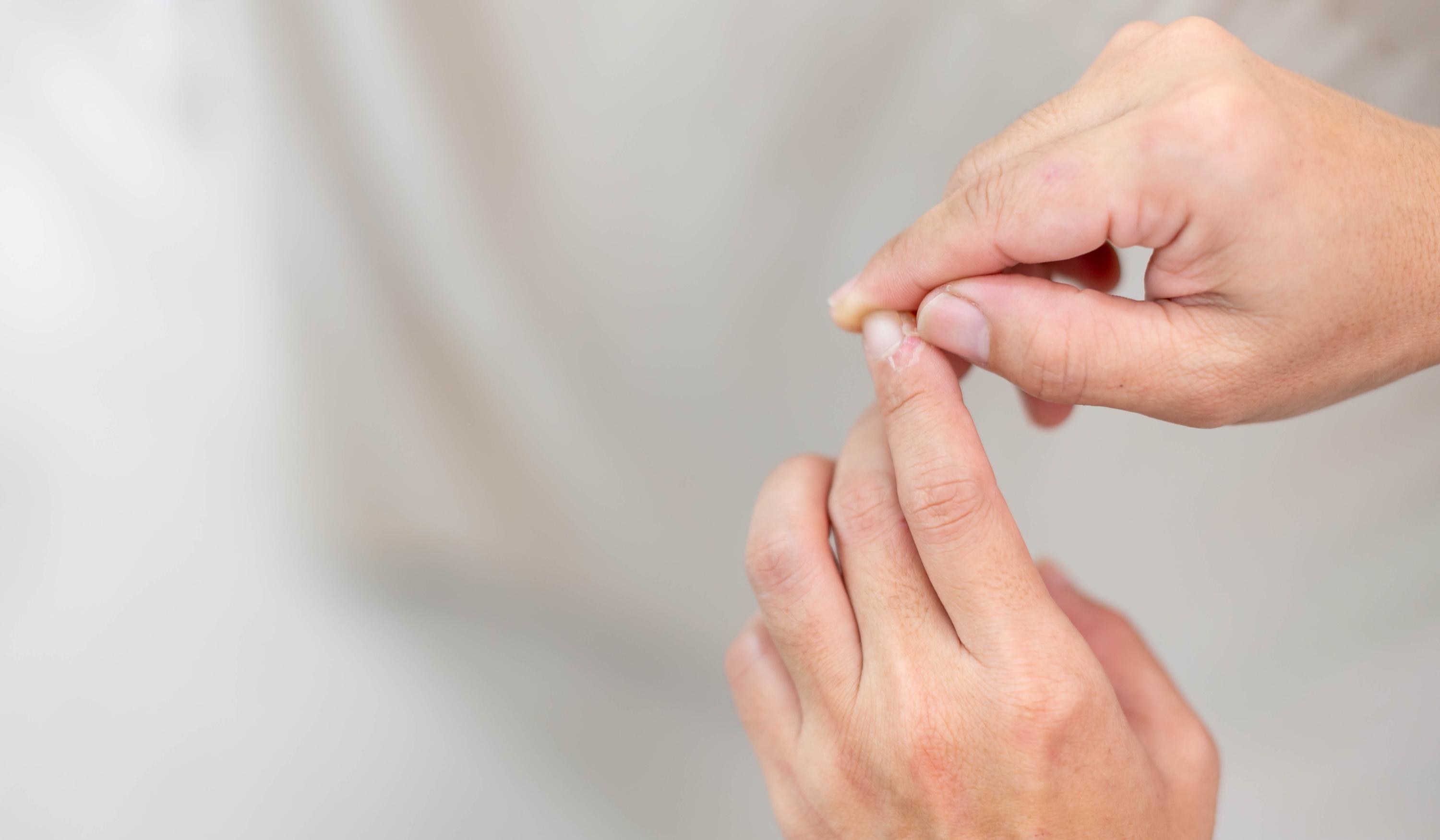You have a white and very painful abscess in a finger or toe but you do not know how to treat it? It may be a panaris, a form of abscess caused by a bacterial infection. If you suffer from it, it is imperative to consult a doctor. But how to recognize a parsnip and what are the complications? Le Figaro takes stock with Professor Philippe Humbert, specialist in dermatology and internal doctor, author of the book "Do you have a good doctor?" (Fayard, 2018) and "Votre peau me dit tout de vous" (Les éditions Sydney Laurent, 2020).
What are the symptoms of parsnip?
Panaris is a skin infection that manifests itself by the formation of an abscess in a finger or toe. It usually occurs when an open wound becomes infected. "The peculiarity of parsnip is that it is very painful," explains Professor Humbert. Symptoms appear successively. In the inflammatory stage, within 2 to 5 days of trauma to the finger, swelling (swelling) may be observed around the nail, which tends to stretch the skin strongly. Redness, a feeling of heat and pain of varying intensity are then felt. "These are pains that 'tap' or 'beat' a bit like a dental abscess," describes the dermatologist. If left untreated at this time, parsnip evolves into an abscess filled with pus.
" READ ALSO - Why is it so difficult to find an appointment with the dermatologist?
What are the causes of a parsnip?
Panaris is caused by a bacterial infection of skin tissue. The main culprits are Staphylococcus aureus or hemolytic beta Streptococcus A. Nevertheless, a parsnip can also be caused by the pyocyanic bacillus which belongs to the digestive tract, or to the yeast of the species Candida albicans, present in the digestive and gynecological mucous membranes. "For the area to become infected, you need a gateway for the bacteria. Typically it will be a small open wound around the nails, too aggressive manicures, skin tearing, blisters, splinters, insect bites or bites. However, anti-infectious molecules naturally present on the skin, defensins, will tend to limit penetration. This attracts an arsenal of immune cells – mostly white blood cells and platelets – that gather around the infectious agent to fight it. As they accumulate, white blood cells form pus in this enclosed space, which visually gives the famous panaris abscess.
" READ ALSO - The multiple, and sometimes unknown, facets of the immune system
What are the risk factors?
You are not likely to develop a parsnip every time you tear off a small piece of skin around a nail. This risk increases if you do it very frequently, but some people will be much more susceptible than others due to several contributing factors:
- blood diseases or "hemopathies" (anemias, leukemias, etc.) that affect blood cells (red blood cells, white blood cells, platelets). These diseases weaken the body, which becomes more vulnerable to infections.
- systemic diseases or autoimmune diseases (for example, systemic scleroderma), in which immune cells turn against the patient's own body.
- chemotherapy treatment that can weaken the body, including reducing the production of red blood cells (anemia) and white blood cells.
- Diabetes: "Knowing that loss of pain sensations is a possible consequence of diabetes, people with diabetes are likely not to feel panaris pain. This delays the diagnosis, which can be serious because parsnip sometimes leads to complications."
- Alcohol dependence: the influence of alcohol decreases alertness, which increases the risk of injury and therefore opens a door to infectious agents. In addition, "due to heavy alcohol consumption, there is a risk of alteration of the nerves that usually alert on pain, which leads to the same consequences as for a diabetic person, but also frequent obstruction of the vessels (atheroma). These conditions favor the penetration of the microbe."
- intestinal parasites (such as nematode) that weaken immune defenses especially against streptococcus or staphylococcus. When the immune system fails, these bacteria have an easier time entering the body by going more unnoticed.
" READ ALSO - Diabetes: better monitoring of the foot and leg
Is a parsnip dangerous?
Untreated parsnip is dangerous because it can be accompanied by serious complications. One of the most severe is infective endocarditis, which results from the spread of microbes to the heart valves. The infection results in immediate symptoms such as chills and fever or even strong weight loss after a few weeks. "Without treatment, you can die," says Professor Humbert.
In other cases, parsnip microbes can lodge in the joints and infect the intervertebral discs, i.e. the cartilage between each vertebra of the spine. This is called spondylodiscitis. The main symptoms are also fever and chills to which are added intense pain of the spine. More rarely, the infection reaches the brain by forming brain abscesses.
Is parsnip contagious?
There is a non-zero risk of transmitting the infection to others. "In 2005, for example, in the commune of Ornans, a person with a panaris on his finger had cooked for all the participants in a bike race. The runners all ended up in the hospital, diagnosed with severe gastroenteritis following the consumption of food infected with staph. " explains Professor Humbert.
Be careful not to confuse the parsnip with:
- herpetic parsnip which is not caused by a bacterium but by the herpes virus. It is manifested by the same symptoms as that of panaris, namely pain, redness on its base, "and especially the presence of vesicles or a large vesicle filled with a clear liquid that quickly becomes suspicious and gives the appearance of an abscess," says Professor Humbert.
- The false panaris which is the "opposite" of the panaris. It is not a bacterium that lodges at the level of the finger but a pathogen in the heart that generates a signal leading white blood cells to accumulate at the level of the finger. In this case, the "false parsnip" is painless but it can be a sign of a more serious pathology. It is recommended to consult a doctor.
How to treat a parsnip?
In prevention, it is essential, if it is not already the case, to be vaccinated against tetanus because the bacterium causing this serious disease (Clostridium tetani) is able to infiltrate through the same wound that caused panaris.
To treat parsnip itself, it will first be necessary to act locally including the evacuation of pus (performed by a doctor), the application of antiseptics (usually chlorhexidine or "dakin solution", or hexomedine) and ointments containing antibiotics (fusidic acid, mupirocin). "At the same time, we can start systemic treatment for 10 days. The most commonly used antibiotics are pyostacin or certain antibiotics from the penicillin family," adds Professor Humbert.
If there is a complication, it must be managed by a specialist who will prescribe a specific treatment. "In case of sepsis, when the infection spreads in the blood as for infective endocarditis or spondylodiscitis, treatment takes place in the hospital using infusions for a minimum of two to four weeks," warns the doctor.





